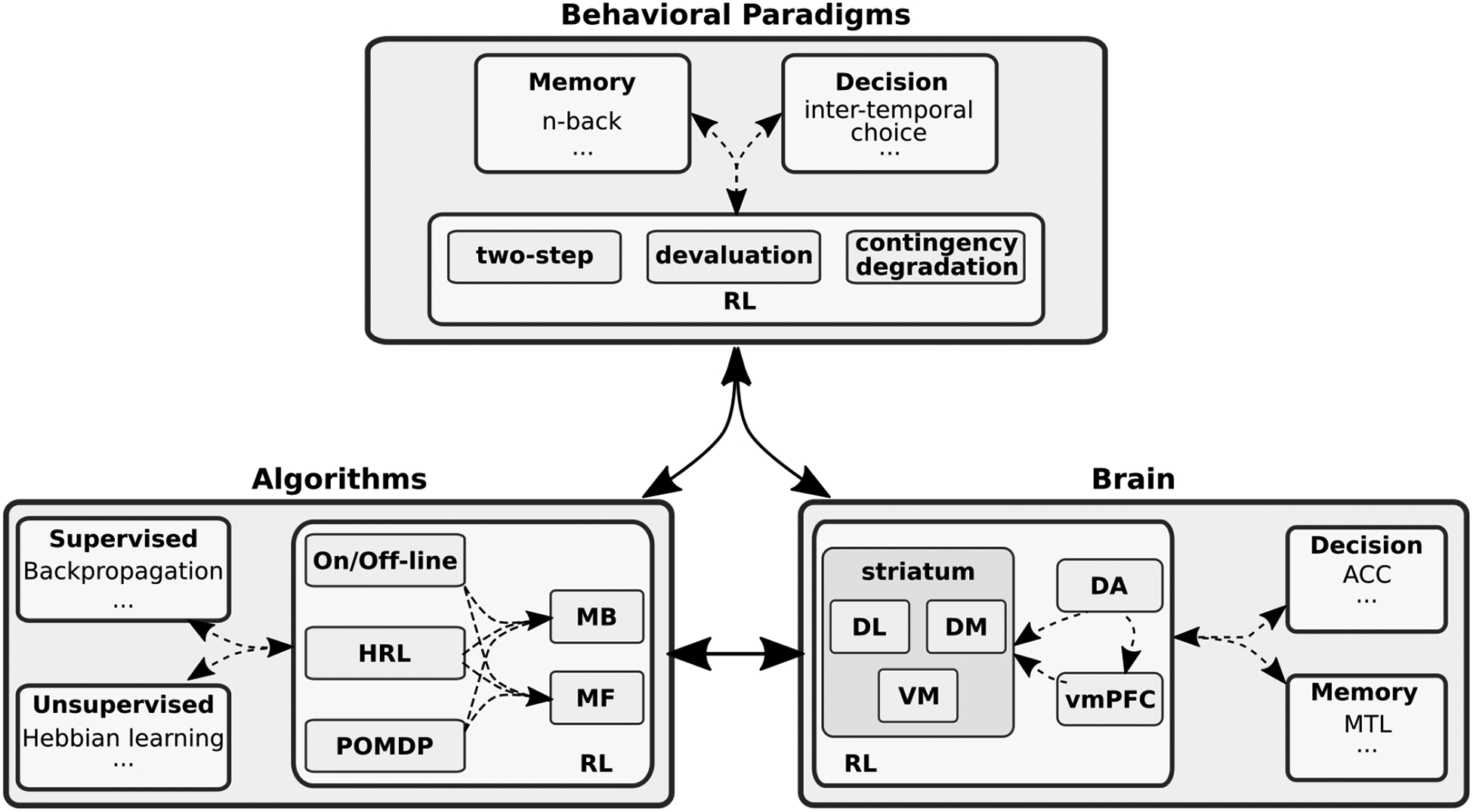Figure 1. RL across fields of research.

Many fields of research use the term reinforcement learning (RL), notably computational, behavioral, and neurosciences. The meaning of RL in each field is used in contrast to other concepts (e.g. supervised in machine learning). While computational sciences frames dichotomies between algorithmic approaches, behavioral sciences contrast and define cognitive constructs by way of experimental designs (e.g. habits are devaluation insensitive behaviors2), and neuroscience focuses on the brain’s separable neural circuits. It is also well accepted that the segregation, both conceptually and empirically, are practical though imperfect simplifications. For example, both memory and decision making processes make significant contributions to the neural circuits involved in RL, meaning that brain regions not uniquely associated with RL contribute to RL behavior nonetheless (dashed arrows). It is important to remember that while the three RL definitions are related (full arrows), they are not equivalent. dorso-lateral (DL); dorso-medial (DM); ventral-medial (VM); ventral-medial prefrontal cortex (vmPFC); dopamine (DA); anterior cingulate cortex (ACC); mediotemporal lobe (MTL).
